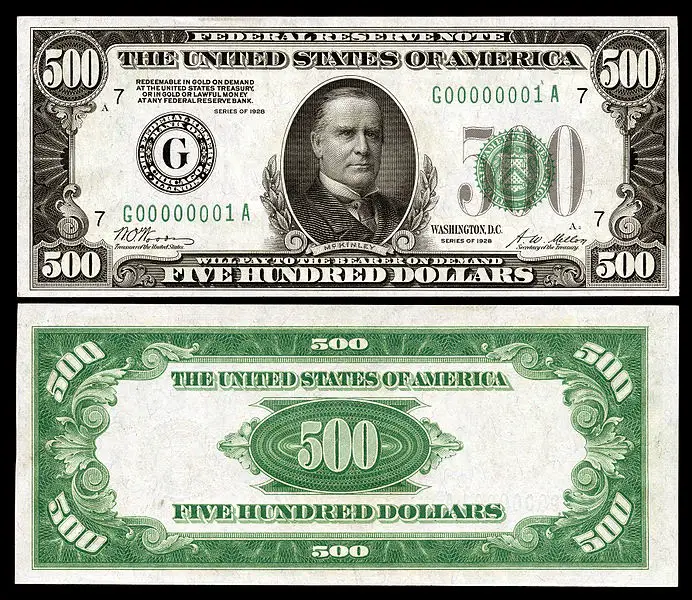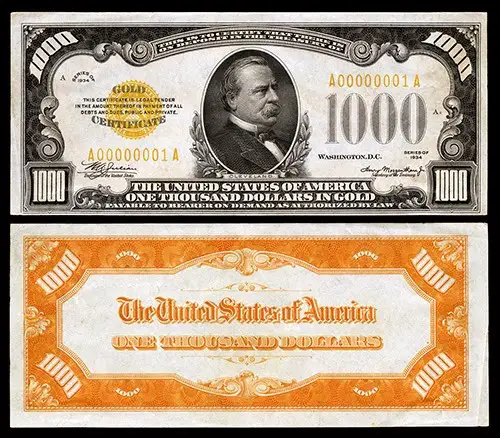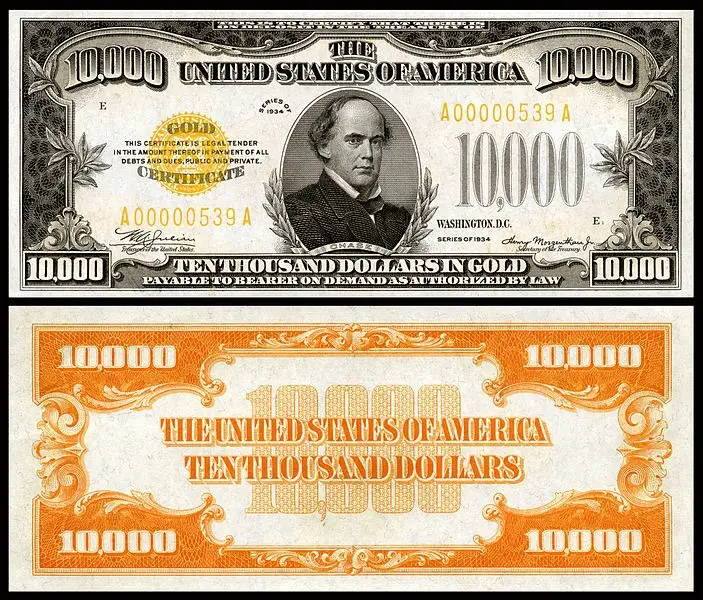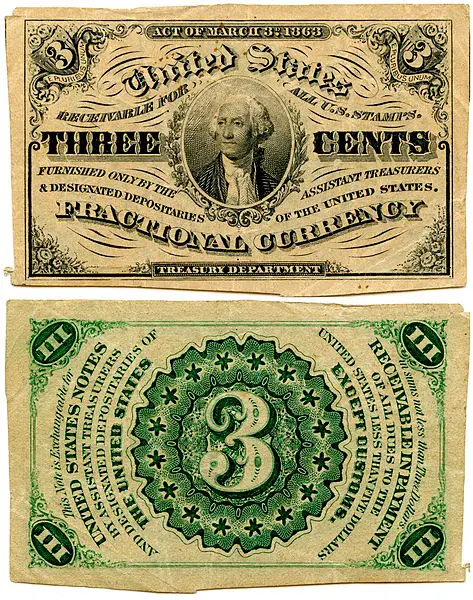The largest bill currently printed and circulated by the U.S. Treasury is the $100 bill, but there used to be bills much larger. One was even worth $100,000.
In 1969, the Treasury discontinued the distribution of any bills greater than $100. The $500 bill, the $1,000 bill, the $5,000 bill, and the $10,000 bill had all been printed in one form or another since the late 18th century. The last series, of what were called high-denomination banknotes, were completed in the late 1920s and early 30s. It was during this time that a piece of currency starring President Woodrow Wilson made an appearance; the $100,000 bill.
These bills were used as gold certificates and represented the ownership of gold instead of the owner having to store their gold. The certificates were issued in 1933 when Franklin D. Roosevelt signed an executive order forbidding the hoarding of gold. The order was given in response to people holding their gold during the Great Depression which was believed to be stalling economic recovery. The order was later ratified by Congress in 1934.
The 1934 series of bills were not issued to the public. They were strictly for gold transactions between Federal Reserve Banks. After Roosevelt repealed the gold standard in 1933, it became illegal for private individuals to own these bills. They were simply an easier way for the banks to transfer money before there were electronic wire transfers.
Although the $100,000 bill was only printed in 1934 and 1935, forty-two thousand of them were made with a total face-value of $4.2 billion. After the late 1960s, most of the $100,000 bills were eventually destroyed, and the ones that remained are now solely in the possession of the U.S. Government.
The other denominations-$500, $1,000, $5,000, and $10,000 banknotes-were printed until 1945 and were publicly circulated. They are still considered legal tender if you ever were able to get your hand on one. Most of the bills that are left are held by collectors.
While Woodrow Wilson is on the $100,000 bill, three other presidents are on the lower denominations with one exception. William McKinley is on the $500, Grover Cleveland is on the $1,000 bill, James Madison is on the $5,000 bill, and Salmon P. Chase got the honor on the $10,000 bill.
Chase was a Chief Justice of the United States and served as Abraham Lincoln’s first Treasury Secretary. You might not have heard of him before, but you may familiar with his namesake. Chase Manhattan Bank was named after him.
Another Additional Fact:
While these bills are the largest, the smallest currency issued as a bill by the U.S. Government had George Washington on it. They were known as “fractional currency” and were issued in 1864. They were bills worth three-cents.








